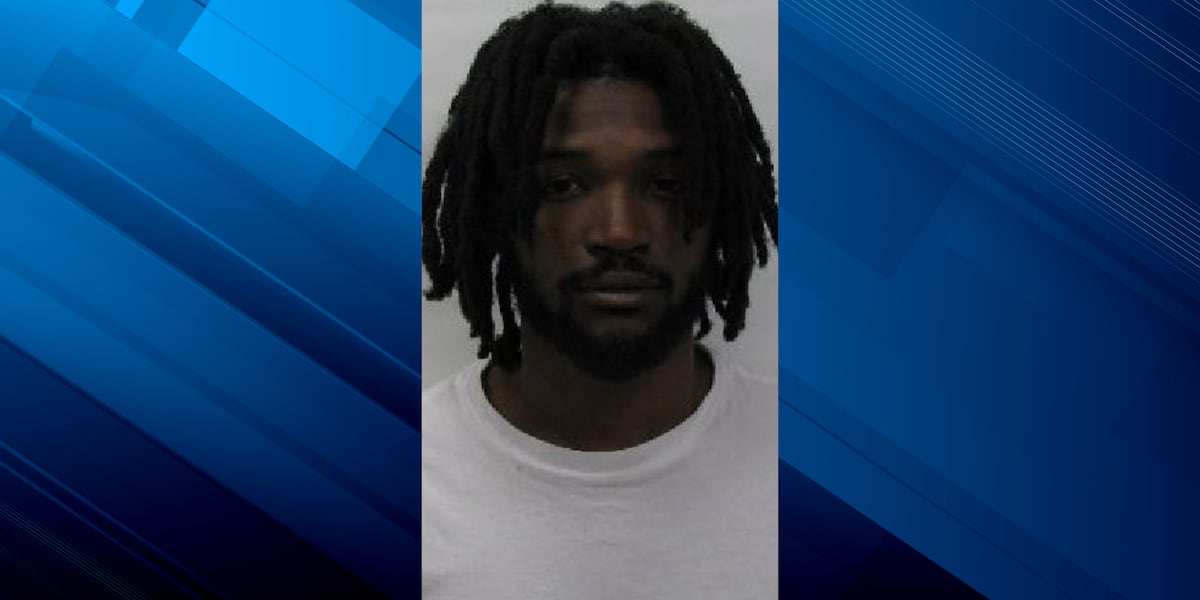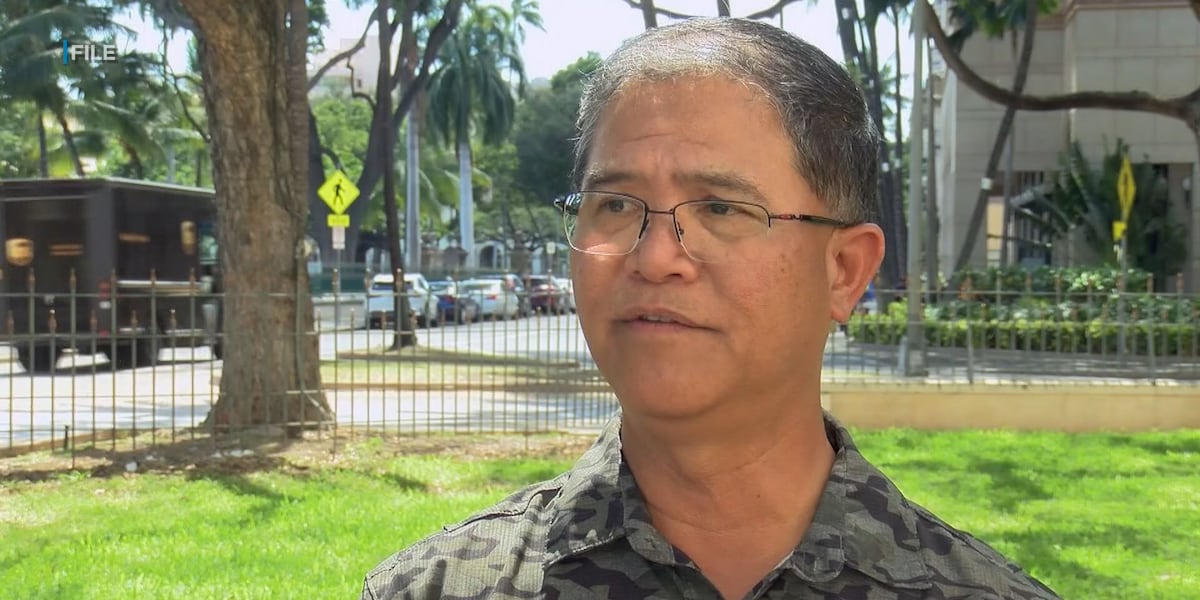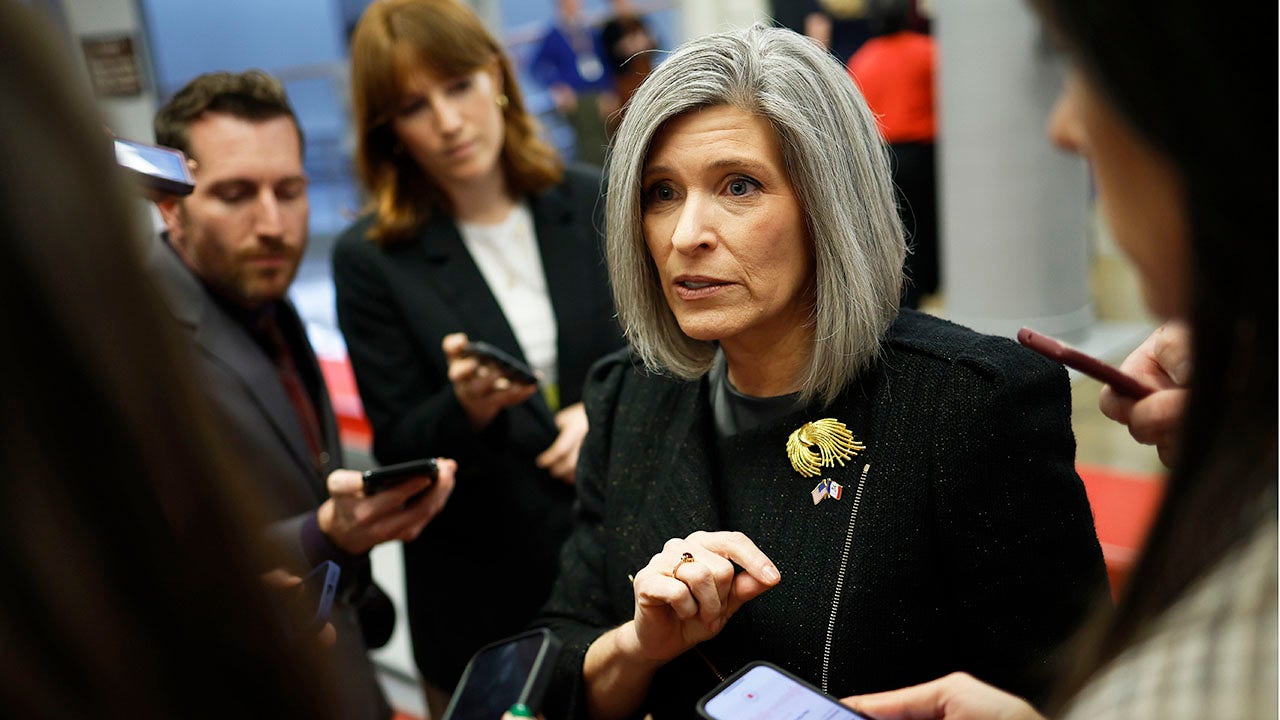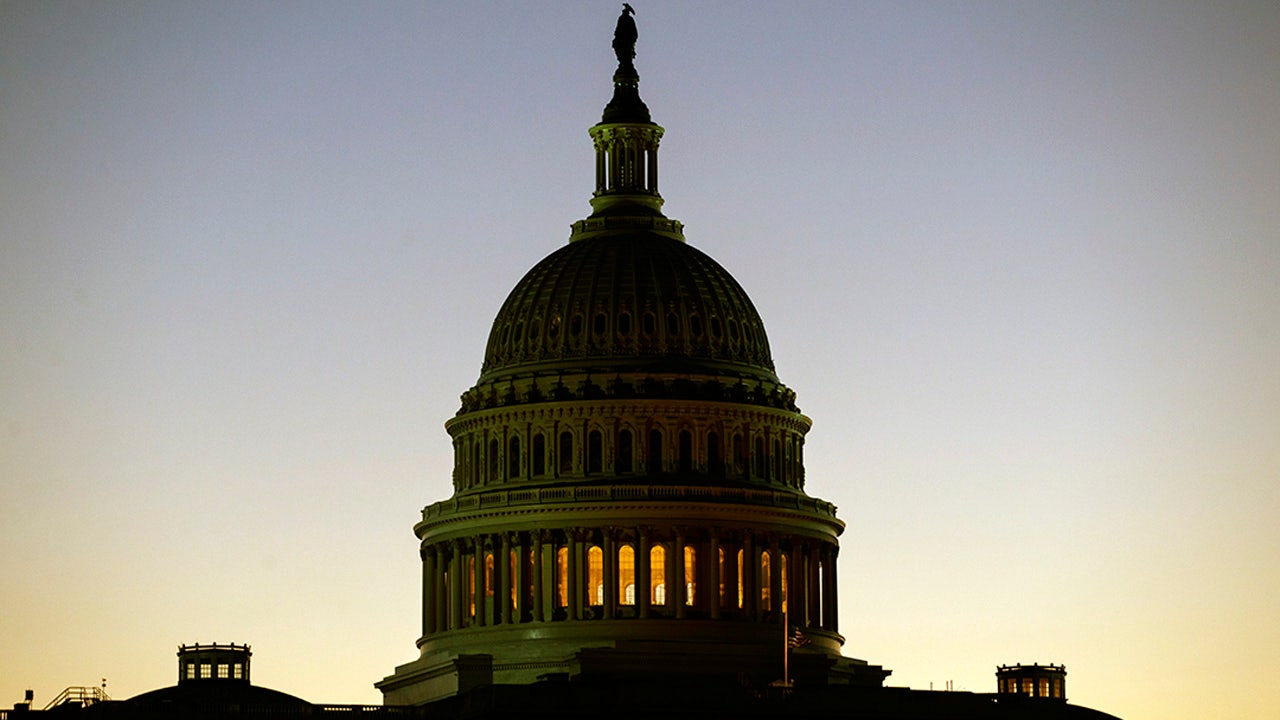Vermont
Vermont Bishop Has Faced Dissension and Racial Conflict – The Living Church

The Bishop of Vermont — a Black woman in one of the whitest states in the country — has experienced hostility and conflict in her role, to the extent that she is always accompanied when visiting churches in the diocese, and her visitation schedule is not publicized.
The Rt. Rev. Shannon MacVean-Brown also faced demands for her resignation from members of the Standing Committee. In 2023, the now-former president of the committee lodged complaints about “leadership and accountability” with the presiding bishop’s office — without first attempting to address the concerns with the bishop herself.
The tensions are remarkable in light of the fact that MacVean-Brown was handily elected on the first ballot at a diocesan convention in 2019, outpolling two white candidates.
“Nobody was thinking, oh, this is going to be great to elect this black woman. I mean, there were just so many other things about who I am as a leader, my experiences, that meshed with who the Diocese of Vermont is. and so it made sense for us to be Bishop and people together,” MacVean-Brown told TLC in an hour-long interview. “And I think we all sort of took for granted that there is an opportunity for us … we could have been more proactive, and foreseen that there could be differences.”
The situation is described in a 22-page Mission Leadership Review written by the Rev. Gay Jennings, the former president of the House of Deputies who now serves as a consultant to dioceses. She based her conclusions on interviews with 48 people in leadership roles or otherwise associated with the Diocese of Vermont.
“The bishop has experienced people speaking to her and about her in ways that are inappropriate – she is the bishop, but more importantly, she is a beloved child of God,” the report says. “It has to be safer for her as a Black woman. Experiencing a home intrusion; installing security cameras for physical safety; needing two restraining orders; needing to be accompanied on visitations; being verbally assaulted by a few people in the diocese – all this consultant can say is, Lord, have mercy—and, I am pretty sure this would not be happening if she were white.”
The home intrusion was a frightening episode, but did not appear to be related to MacVean-Brown’s diocesan role. Diocesan offices and the bishop’s residence are located in Rock Point Commons, a 130-acre forested enclave owned by the diocese on the edge of Burlington. MacVean-Brown and her husband Phil were at home one night in November 2021 when they heard glass break. They called police, who responded and arrested a man with a long criminal record.
There’s a separate restraining order against a woman who repeatedly confronted the bishop at her home and office. “She was upset with someone at one of the parishes, but was coming to me to try to make me do something about it. And it became invasive in the ways she was trying to do that,” MacVean-Brown said.
Vermont has a reputation as a very progressive state, but it is also nearly 94 percent white, making it the second-whitest state (Maine is a roundoff error whiter). According to a local television report in 2021: “Since 2018, at least three Black female leaders in Vermont, including a state lawmaker, a town board member and the former head of the Rutland area NAACP branch, have left their roles in response to persistent harassment and sometimes violent threats.”
“Vermont is so beautiful,” the bishop said, and when she visits one of the 42 Episcopal churches in the state, “the drive never gets old, doesn’t matter what season it is.”
But “as you drive around in different places, pockets of the state, you’ll see things that let you know that I might not be safe by myself,” she said, citing militia activity as an example. “And so for peace of mind, my husband goes with me when we make visitations.”
Tension escalated in early 2023 when the president of the Standing Committee contacted the presiding bishop’s office. According to the Mission Leadership Review, “There had been no previous meaningful discussion of the Standing Committee’s concerns with the bishop, and this intervention happened without her knowledge and before she was fully aware of the issues at hand.”
The then-president and another member of the Standing Committee reportedly refused to take part in a reconciliation process, insisting instead that the bishop should resign.
The report is vague about the specific nature of the conflict, and the principals don’t want to discuss it. The Rev. Lisa Ransom, the former president of the Standing Committee, said by email: “Out of respect for my bishop, I will not be speaking to the press.” MacVean-Brown said: “I’ll leave that for others to talk about, you know, the details of that.”
Four of the eight members of the Standing Committee have been replaced since the conflict erupted. The four continuing members wrote in a May 23 letter to the diocese: “It has been brought to our attention that many, if not all, of the individuals named by the former president of the Standing Committee as having formal complaints about Bishop Shannon were not corroborated by those individuals in follow-up conversations.”
Deacon Stannard Baker, one of the continuing members of the Standing Committee, said the conflict stemmed from a confluence of small problems, rather than a single major cause. For example, he noted that the pandemic began about seven months after the bishop’s consecration, complicating relationship-building efforts.
“She had to hold the line quite, quite strongly on not having in-person services, not having communion, that sort of thing. And before it was safe to leave that, there were small congregations, particularly saying, Oh, we want to go back, we want to go back. And the bishop had to say ‘no, you may not,’” Baker remembered.
The leadership review provides hints of a conflict over governance. “Congregationalism is the dominant polity throughout much of New England’s religious life,” the document states. “The town hall culture of Vermont means people expect to have a say on anything and expect to be involved in all decision-making.”
Congregationalism is a system in which individual churches are largely self-governing, and as the report dryly states: “some aspects of congregationalism are in tension with some aspects of the polity of the Episcopal Church.”
MacVean-Brown is from Detroit, which she identified as “the Blackest city in the nation.” She said, “I’m used to a really diverse form of leadership, with a lot of Black people in leadership. … So it takes practice doing this, what we’ve done.”
The bishop started a new congregation online during the pandemic, the Green Mountain Online Abbey, which continues to worship as a community today, led by a vicar. When online worship started, “it was funny because we didn’t have enough room in the ‘church,’ because our Zoom account wasn’t big enough to accommodate everyone. So we had a new church ‘building’ by the next day.”
Financial concerns have added to the tension. In 2021, an assessment by an accountant “revealed that a financial cliff is on the horizon,” necessitating austerity measures. She reached an agreement with Bishop of New Hampshire Robert Hirschfeld and Bishop of Maine Thomas Brown to share resources for ministry and administration, and each of the bishops now serves as an assisting bishop in the other two dioceses.
“We’ve been chipping away at it for the last few years,” working to get clear accounting practices and efficiencies in place, and hiring a new interim chief financial officer. “We’re going to be OK,” she said.
Under her leadership the diocese also has created “constellations” of affiliated congregations, creating more full-time opportunities for clergy. Five of the 42 parishes currently have full-time priests, and three additional full-time priests serve constellations. In December, the diocese (along with the Diocese of Massachusetts) received a Lilly grant of $1.168 million for “an initiative that will provide lay leaders in lay-led congregations with opportunities for spiritual growth.”
The diocese recently invited Kaleidoscope Institute to facilitate a day of conversation and reconciliation. “Executive Council and the Standing Committee have a mixed assessment of the March 16 Truth and Reconciliation Day,” the two groups said in a May 23 letter. Some attendees had not been aware of the conflict, and “the day was not managed in a way that enabled attendees to hear or discuss details of the 2023 conflict, still less to begin a process of reconciliation. As a result, the work of the day was far from complete, and many attendees left wondering, ‘What’s the next step?’”
Still, “The lay and clergy members of both groups agree unanimously that we support Bishop Shannon MacVean-Brown and look forward to her having a long tenure as our bishop.” She is 57, and thus has 15 years until mandatory retirement.
“We’ve really gathered around her and and begun this process of really understanding some of those currents of racism and misogyny, and how we move forward in a stronger, more thoughtful way,” Baker said.

Vermont
Vermont murder suspect arrested in New York

PORTLAND, N.Y. (WCAX) – Police say the suspect in a Vermont murder was arrested in New York on Wednesday.
Terrence Biggs Jr., 25, of Michigan, was wanted in the deadly shooting of Austin Rodriguez, 26, of Rutland. It happened at a home on Summer Street on April 22.
Investigators say state police in New York arrested Biggs during a traffic stop in Portland, New York, that is in western New York, early Wednesday morning.
Biggs is charged with second-degree murder.
We still don’t know what authorities think led to the shooting or what the connection was between the two men.
Copyright 2025 WCAX. All rights reserved.
Vermont
Vermont shelter celebrates 68 adoptions in one month

Vermont
A covered bridge quest in Vermont – VTDigger


This story by Tim Calabro was first published in The Herald on Sept. 11, 2025.
Phill Gatenby rolled over the Moxley Bridge in Chelsea with a plastic skeleton riding shotgun in his Jeep, having made the long drive from Brattleboro for an early morning visit. Just a year ago, the Manchester, England native — by way of Florida — had never laid eyes on a covered bridge. Now he’s smitten.
Gatenby recalled seeing a covered bridge while driving around and thinking, “Oh, that’s interesting. I’d never seen a covered bridge in my life before. Never really heard of them,” he said. “A couple days later, I was going to Townshend, and all of a sudden it’s the Dummerston Bridge, and I’m just like, different size, different shape, different color.”
He stopped for directions and as he got lost on the back roads, he saw more and more covered bridges.
What started as casual curiosity has evolved into a quest: visit and film all 100 of Vermont’s authentic, historic covered bridges and share the journey on YouTube in a series titled “Vermont’s 100 Covered Bridges.”
So far he’s been to 50 and cranked out 37 videos of his visits — one every Sunday.
The most recent set of episodes has focused on the covered bridges of Tunbridge, Chelsea, and Randolph.
No two are quite alike. From king and queen trusses to parallelogram-shaped spans built on bends, like some on the First Branch, Gatenby has come to appreciate their variety and character.
And, stepping back from the bridges, the entire scene fascinates Gatenby.
“I mentioned this in the Kingsbury Bridge [episode]. I was at the bridge and I looked, and you’ve got the green mountains in the background and rolling hills. Then you’ve got the farm with the — is it the corn towers? — the river and a covered bridge. And it just says, like, you can’t get more Vermont!”
Gatenby’s process is rigorous. Each episode takes hours to shoot and edit. He gets different angles — sometimes driving through a bridge three or four times for the right shot. He’s waded into rivers, climbed steep banks, and once filmed inside a long-retired bridge that had been turned into a town shed.
“I try and do something that’s consistent,” he says. “So it’s, you know, the same start, the same middle. I go in the river. I’ve been in every single river so far.”
Gatenby credits community access TV stations — first Okemo Valley TV in Ludlow and now Brattleboro Community TV — for helping him build his skills and loaning him equipment.
“They literally brilliantly sat down and five, six, seven weeks went through how you do it,” he recalled.
Gatenby’s episodes go out via Okemo Valley TV’s YouTube channel and have regular times on the Okemo Valley and Brattleboro TV stations.
Form, Function, History
Vermont once had more than 600 covered bridges, Gatenby noted, but flooding and age have winnowed down the number greatly. Now, 100 remain and many towns hold clusters of them.
Tunbridge, for example, boasts five (Flint, Larkin, Mill, Cilley and Howe), with the Moxley bridge just over the Chelsea line. Randolph has three (Kingsbury, Gifford, and Braley or Johnson), all of them along the Second Branch.
Gatenby pointed out that three of the First Branch bridges were built by the same person, Arthur Adams. That’s a phenomenon common to covered bridges, Gatenby noted. Oftentimes the same person who had the skills to build a bridge would become the area’s go-to expert.
As Gatenby visits each of the 100 covered bridges spread throughout the state, he points out the history and construction techniques used in each, particularly the suspension methods unique to covered bridges. Most covered bridges in the White River Valley make use of modified king trusses, posts fitted into a triangle, which provide strength to the structure. Some, like the Moxley bridge, use both king trusses and square queen trusses around them.
Vermont’s covered bridges aren’t just structural relics, though — they’re cultural icons.
Some have graced the silver screen, including the Kingsbury Bridge in Randolph, used by Alfred Hitchcock as scenery in his 1955 film “The Trouble with Harry.”
“North by Northwest” has its dramatic crop duster strafing Cary Grant, Gatenby jokes in one of his episodes before cutting to a humble, scenic shot featuring the South Randolph bridge. “Unfortunately, it wasn’t quite as glamorous as that!”
The Chiselville bridge in Sunderland — Gatenby’s favorite so far — featured in “Baby Boom,” Diane Keaton’s 1987 film, and a year later, in the 1988 Chevy Chase and Madolyun Smith Osborne comedy, the Upper Falls bridge in Weathersfield made for a memorable gag (“I wouldn’t go that way if I were you”).
Another memorable stop is East Corinth, where the prop bridge used in “Beetlejuice” was fabricated out of whole cloth for the two weeks of filming. “Thousands of people go there every year,” he said, noting that the set-piece, used now as a shed at a ski area, doesn’t count among the authentic and historic bridges he films.
Nor, he said, does the Quechee Bridge. Though it is often mistaken for a traditional covered bridge, it’s just a facade.
“It’s concrete and steel. There’s very little wood,” Gatenby said. “You see the wood on the outside and the roof.”
Traditional bridges are completely made from wood and use a variety of truss systems to strengthen the span.
Place and Purpose
Gatenby moved to Vermont from Florida in July of last year. He now lives in Brattleboro with his wife and works as a shift supervisor at a home for adults with mental health issues.
“I’m a trained youth worker in England,” he said, having spent years working for the Prince’s Trust, a charity founded by King Charles. His day job might be demanding, but the early hours leave room for exploration.
“Three o’clock to 11:30 at night, so the daytime allows me to spend time in the TV studio,” he says. That flexibility has enabled him to squeeze in long road trips, sometimes filming six or seven bridges in a single day. “I’ve got to do minimum six, seven bridges each trip now,” he added. “To make it worth it.”
This Sunday, the show’s 38th episode will be released.
“I’m doing a little special 50th episode,” he said, noting the halfway point in the 100-bridge journey. “That’s where I’m bringing in stuff like the Quechee bridge. Because people said, ‘Oh, you didn’t go to the Quechee.’”
As the series nears its midpoint, Gatenby’s audience is slowly growing, both online and in the communities he visits.
“It’s just amazing … you know, and I’m just visiting them all,” he said, “places that I wouldn’t have got to see otherwise.”
With 50 more bridges to go, Vermont’s covered bridge guy still has miles to travel and stories to uncover.Gatenby’s series of covered bridge videos can be watched on Okemo Valley and Brattleboro public television stations or found on YouTube.
-

 Finance1 week ago
Finance1 week agoReimagining Finance: Derek Kudsee on Coda’s AI-Powered Future
-

 World1 week ago
World1 week agoSyria’s new president takes center stage at UNGA as concerns linger over terrorist past
-

 Technology1 week ago
Technology1 week agoThese earbuds include a tiny wired microphone you can hold
-
North Dakota1 week ago
Board approves Brent Sanford as new ‘commissioner’ of North Dakota University System
-

 Culture1 week ago
Culture1 week agoTest Your Memory of These Classic Books for Young Readers
-

 Crypto1 week ago
Crypto1 week agoTexas brothers charged in cryptocurrency kidnapping, robbery in MN
-

 Crypto1 week ago
Crypto1 week agoEU Enforcers Arrest 5 Over €100M Cryptocurrency Scam – Law360
-

 Rhode Island1 week ago
Rhode Island1 week agoThe Ocean State’s Bond With Robert Redford



















